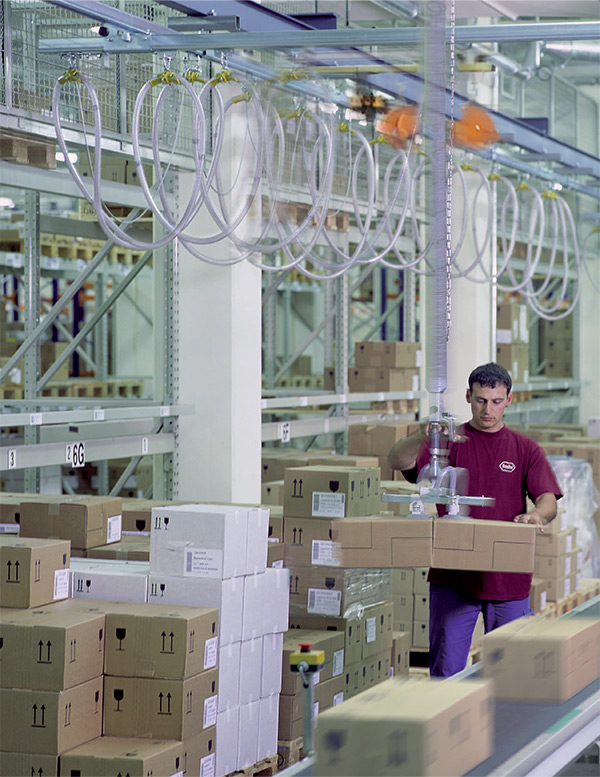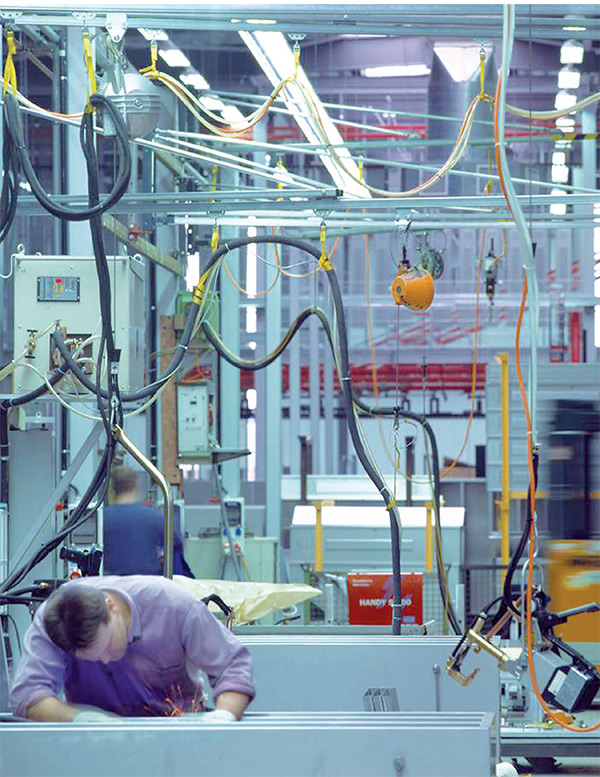In an attempt to mitigate future supply chain crises, many point to technology and automation as viable solutions — but are they?
By Andrew Dierks, Director of Product Management at Conductix-Wampfler
The supply chain industry has experienced immense challenges over the past two years, leading supply chain companies and industry leaders in a critical search for ways to mitigate future crises.
Previously, automation was not a priority within the supply chain industry because human labor was inexpensive and plentiful – the ROI calculation simply did not support optimizing with technology and automation. However, the recent combination of labor shortages and demand that exceeds throughput capability has turned the tables. And now, many point to technology and automation as viable solutions – but are they?

Given the complexity of supply chains’ many components, no one solution can prevent all complications in the industry. Supply chain crises are often the result of individual delays at various steps, which compound to produce major challenges. However, this negative ripple effect also highlights a critical area for improvement.
Just as negative factors at each step of the supply chain can cause crises, implementing small improvements throughout the supply chain industry can lead to major benefits. Herein lies automation’s role in future-proofing against supply chain crises.
Although each company and facility will vary greatly in its automation journey, infrastructure is the most fundamental building block. Infrastructure’s main (and most important) role is to transmit data from one place to another, commonly from an endpoint to a server. Whether you are new to automation or have some practices in place, it’s advantageous to assess your current infrastructure, its ability to allow for the free flow of information and its potential to adapt with future advancements. With the appropriate infrastructure in place, you can build on a strong foundation for short-term and long-term improvements.
In the short term, a solid infrastructural foundation can allow you to identify and execute optimizations that will provide the highest ROI. Many companies overlook infrastructure systems’ potential to help in identifying room for improvement, falling victim to the common mistake of jumping too quickly into the “doing” phase. Instead of simply guessing where automation can be most helpful, it’s wise to leverage your infrastructure at the beginning of your automation journey.
Before making any optimizations, deploy sensors to establish a baseline for your existing processes, noting current figures for standard process measurements like time, throughput or chokepoints. Conducting a study with that baseline data can help pinpoint where you’ll see the highest ROI and inform your plan for improvement.
Data will provide the most accurate answer about where automation would be most useful, and there’s often a common theme – manual, repetitive processes. Any time you’re moving and guiding materials, a human operator is occupied, potentially for longer than necessary if the process was automated. The same principle applies to automating parallel workflows on parallel lines. For example, if you have to move a coil of steel from Point A to Point B, your operator is busy with that task. With automation, that operator is now free to move around more freely, simply monitoring the automated tasks rather than executing each step directly.
By automating the manual, repetitive processes typically carried out by an operator, that person becomes more like a conductor, ensuring the appropriate flow of automated, optimized tasks. In many applications, especially manufacturing, this allows for increased throughput and minimized backlogs.
Once you’ve implemented optimizations in your supply chain business, you can then use your infrastructure to help quantify improvements, support communication between devices and enable future, data-driven optimizations.
In the long term, it will be vital that your infrastructure can adapt to future advancements. As the industry advances, your infrastructure will be the key to leveraging data for artificial intelligence and machine learning solutions. If your infrastructure can’t support that growth, you will have to pay the price, whether through costly upgrades or lagging behind competitors. To avoid either possibility, it’s wise to make the necessary infrastructure investments now.

Despite recent challenges for the supply chain industry, it’s clear that there have also been significant industry advancements made in the last decade. Looking ahead, we anticipate even more rapid innovation that leverages current data-centric trends.
As the industry continues to discover new ways to leverage data, companies can set themselves up for success and future-proof their businesses by establishing strong infrastructure for data transmission and automation deployment.

In this episode, I sat down with Beejan Giga, Director | Partner and Caleb Emerson, Senior Results Manager at Carpedia International. We discussed the insights behind their recent Industry Today article, “Thinking Three Moves Ahead” and together we explored how manufacturers can plan more strategically, align with their suppliers, and build the operational discipline needed to support intentional, sustainable growth. It was a conversation packed with practical perspectives on navigating a fast-changing industry landscape.